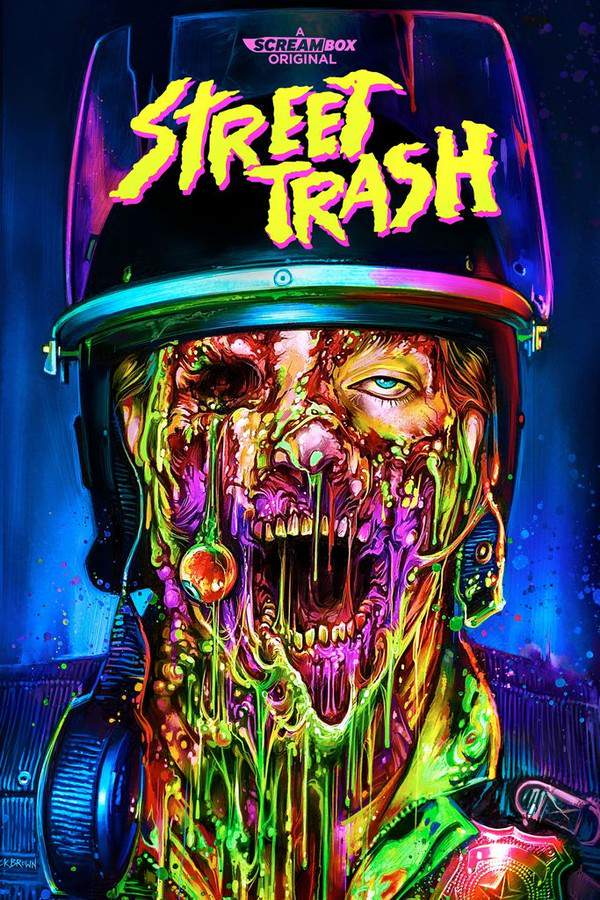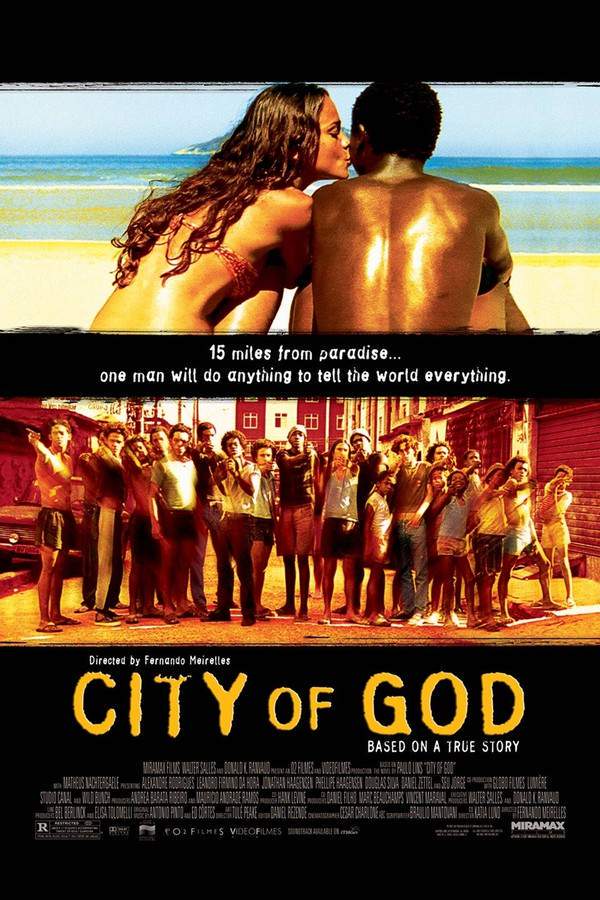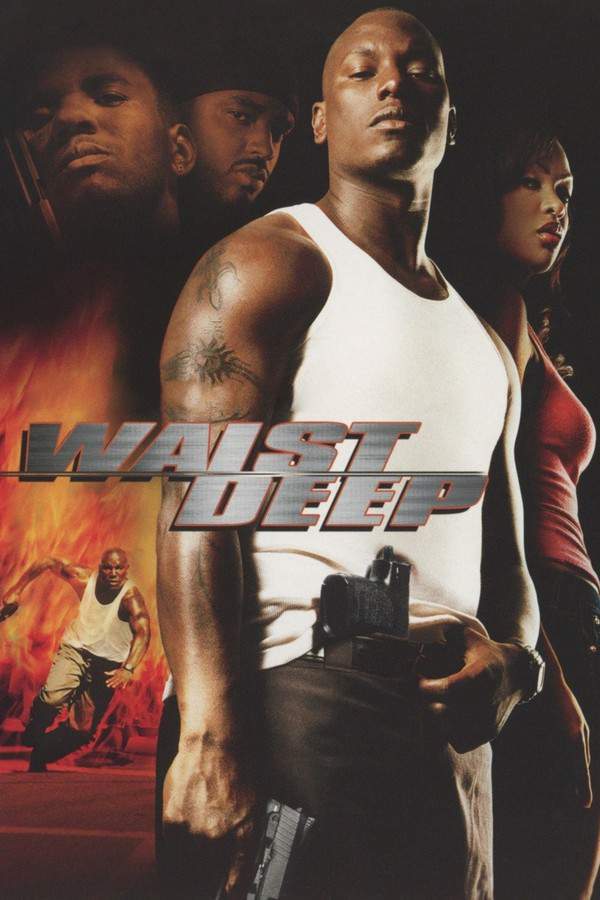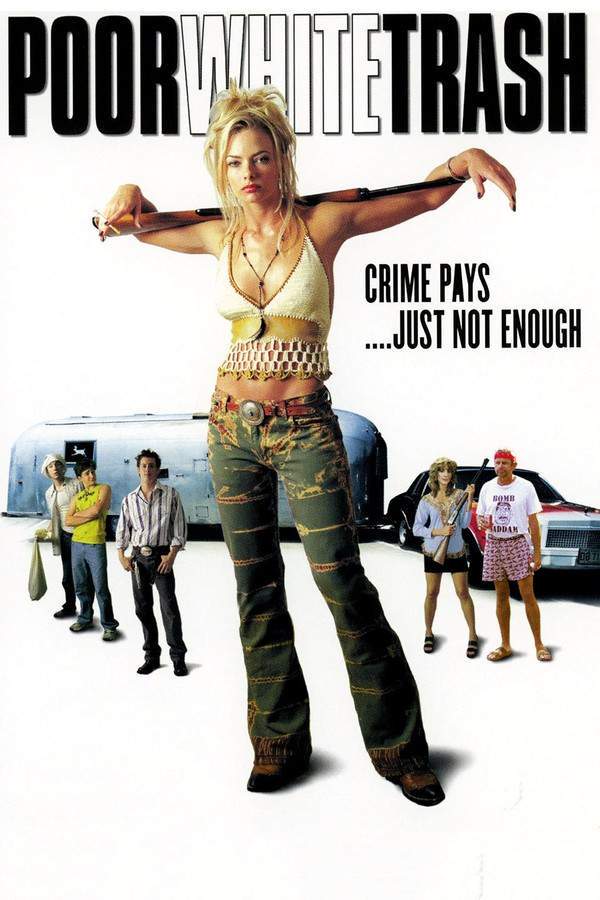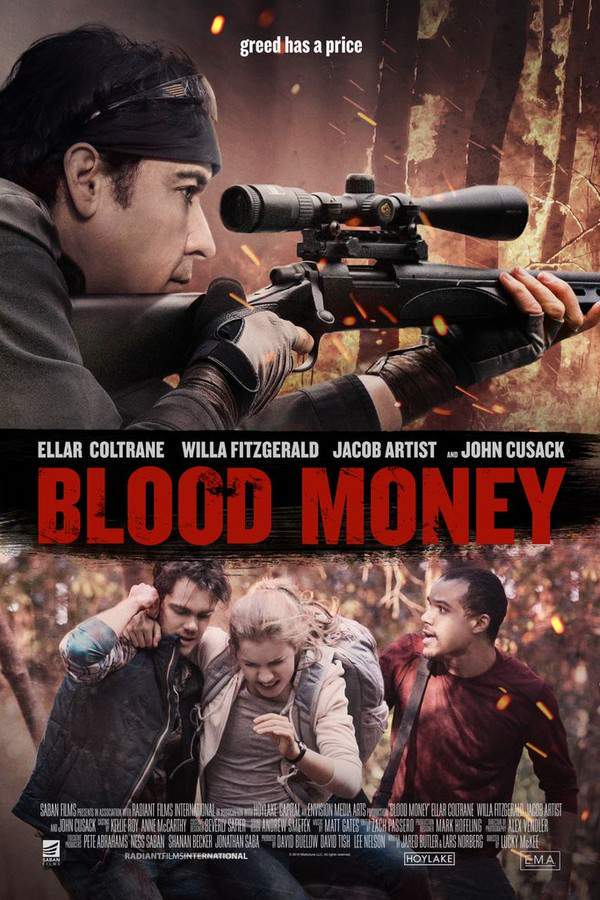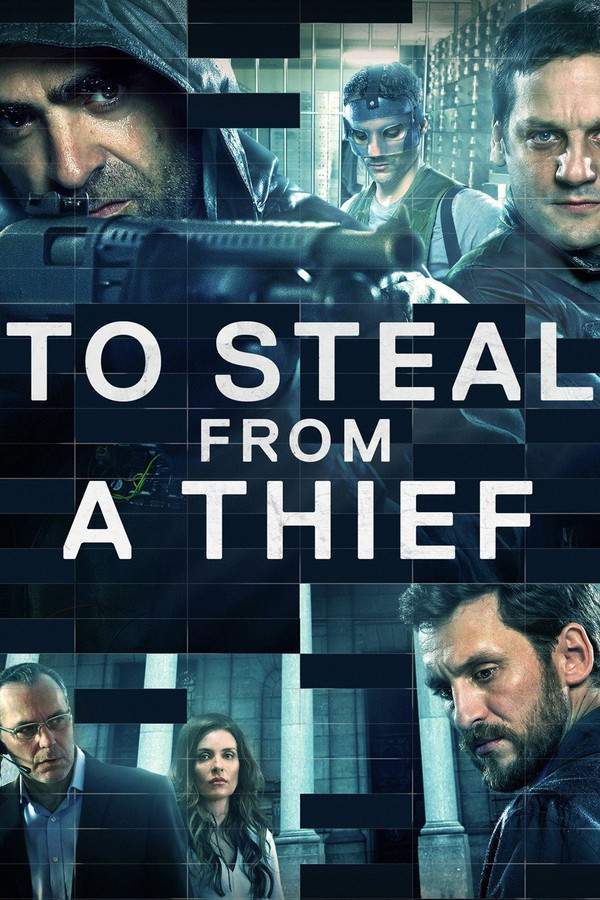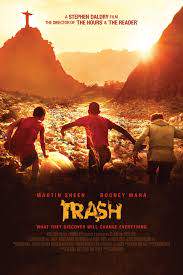
Trash 2015
Directed by

Christian Duurvoort
Made by

Universal Pictures
Trash Plot Summary
Read the complete plot summary and ending explained for Trash (2015). From turning points to emotional moments, uncover what really happened and why it matters.
Pia Angelo, a 9-year-old girl, has recently passed away and is laid to rest in a cemetery. Her father, Jose Angelo, portrayed by Wagner Moura, finds himself in dire straits as he is pursued by the corrupt Brazilian police, ultimately leading to his arrest. Just before his capture, Jose cleverly discards one of Pia’s old purses into a garbage truck, concealing something significant inside it.
The garbage truck makes its way to a dump site, where it unloads its contents. Among the debris are three streetwise Brazilian teenagers: Raphael, played by Rickson Tevez, Gardo, portrayed by Eduardo Luis, and Rat (Jun-Jun), played by Gabriel Weinstein. These rag-pickers survive by scavenging through the trash for anything valuable, sorting useful items for recycling and other purposes. At just 14 years old, both Gardo and Raphael are paid less than the standard wage due to their youth.
One fateful day, the boys stumble upon Jose’s wallet in the garbage dump. Inside, they find cash, a key, and an animal lottery, along with Jose’s ID card. Meanwhile, Jose suffers brutal torture at the hands of the police, who are after the contents of the wallet—though the true nature of these items remains elusive. As the police offer R 1000 for the return of the wallet, claiming it holds clues to a crime, a policeman named Federico takes notice of Raphael and Gardo, inquiring about their names.
Despite the officer’s apparent interest, Raphael remains skeptical and knows that the wallet may hold deeper secrets he is determined to explore. They enlist Rat’s help, who lives in the sewers due to a contagious skin disease that excludes him from the Favella. Raphael promises Rat an equal share of the potential reward for his assistance in solving the mystery. Rat deduces that the key opens a railway locker, compelling Gardo to distract the police by committing a minor theft. While the police are preoccupied, Rat and Raphael access the locker, where they find a letter addressed to a prisoner named Joao Clemente, an attorney and social activist.
Unfortunately, neither boy can read, leaving them baffled about the letter’s full contents. They are fortunate to have support from Father Juilliard, a priest, and Olivia, a compassionate NGO worker who assists the rag-pickers, as they both represent the only trustworthy figures in their lives. Utilizing Olivia’s laptop, the kids learn that Clemente has a background as a lawyer and activist who campaigned for the rights of marginalized communities, only to be jailed by the corrupt politician Santos.
Gardo dreams of claiming the reward for finding the wallet, but Raphael insists on meeting Clemente first to discover the truth. Meanwhile, the police intensify their pursuit for the wallet at the garbage dump. Inspector Federico Gonz grows suspicious when the boys miss work, and he resorts to interrogating Raphael with brutal tactics, tossing him around in a police cruiser, inflicting numerous injuries.
As Gardo seeks Father Juilliard’s assistance to find Raphael, the police deny any cooperation, claiming that minors are not processed at that station. Despite Federico’s relentless abuse, Raphael remains tight-lipped about the wallet. Eventually, a lack of support from his colleagues spares his life.
Raphael shares information with Rat and Gardo about Federico’s conversations regarding the corrupt politician Santos. They resolve to leverage Olivia’s connections to meet Clemente by presenting themselves as family to the imprisoned lawyer. During a visit to Santos’s beachfront property, they discover from his gardener that Jose had been a trusted confidant who stole R 10 million from Santos. When Santos was away, Jose had filled trash bags with the stolen funds and concealed them in a broken fridge.
The plot thickens when Gardo and Olivia finally meet Clemente, who reveals a shocking truth: Jose was indeed his nephew. Clemente explains that the numbers in the letter hint at the location of the hidden money. Alarmingly, Santos learns about Olivia’s visit to Clemente and orders Federico back to the garbage dump.
As the situation escalates, Federico discovers Pia’s wallet in Olivia’s possession and swiftly arrests her. In a ruthless display of authority, the police retaliate against the needy community by setting fire to the dump due to their perceived lack of cooperation. Just as the boys are close to deciphering the hiding place of the money, Federico’s forces seize control of the situation. However, the code leads them to St. Francis cemetery, where it is revealed that Pia is alive, secreted away in the cemetery while her casket conceals the stolen R 10 million.
Federico arrives at the cemetery only to be confronted by the boys, who have discovered Pia. In a dramatic twist, Pia intervenes and incapacitates Federico, allowing the boys to escape with her, the money, and the incriminating book. They return to the dump and decide to secretly share some of their newfound wealth with Father Juilliard, alongside the book, so he may continue his charitable efforts. Intending to make a difference, they scatter a portion of the money throughout the dump and take a fraction for themselves.
Ultimately, Father Juilliard teams up with Olivia to publish the information contained within the book online, attracting the attention of CNN. Their efforts lead to the arrest of Santos and his corrupt associates, including the vile Federico, bringing a measure of justice to the community.
Trash Timeline
Follow the complete movie timeline of Trash (2015) with every major event in chronological order. Great for understanding complex plots and story progression.
Pia's Death
Pia Angelo, a 9-year-old girl, tragically dies and is buried in a cemetery. Her death sets off a chain of events that impacts her family and others in her community profoundly.
Jose's Arrest
Jose Angelo, Pia's father, finds himself on the run from corrupt Brazilian police. He is eventually caught, but not before he manages to discard an old purse belonging to Pia, concealing something significant inside.
Discovery at the Dump
Three Brazilian street teenagers, Raphael, Gardo, and Rat, scavenge through a garbage dump for valuable items. They stumble upon Jose's discarded wallet, discovering cash, a key, and an ID card, which intrigues them.
Jose's Torture and Death
As the boys investigate the wallet, Jose suffers at the hands of the police who are desperate to uncover its secrets. He ultimately loses his life, heightening the stakes for the boys and their discovery.
Police Offers Reward
The corrupt police issue a reward of R 1000 for the wallet, claiming it holds vital clues. The boys become wary but determined to unearth the mystery behind the wallet and its contents.
Rat Joins the Quest
Raphael and Gardo bring Rat into the fold, promising him a cut of any potential reward. Rat, who lives in the sewers due to a skin disease, quickly helps the boys decode the wallet's secrets.
The Railway Locker Clue
Using the key from the wallet, the boys unlock a railway locker, unveiling a letter linked to a prisoner, Joao Clemente. Their inability to read the letter leaves them with lingering questions about its significance.
Learning about Clemente
With the help of Father Juilliard and Olivia, the boys learn about Clemente's background as a lawyer and activist. They become determined to meet him, excited about the possibilities his knowledge could bring.
Confronting Santos
The boys discover that Santos, a corrupt politician, had hired Jose Angelo for a significant amount of money. This revelation motivates them to piece together the puzzle of the missing fortune.
Meeting Clemente
Gardo and Olivia manage to meet Clemente, who reveals that José is indeed his nephew. He clarifies that numbers referenced in a letter act as a code leading to Jose's hidden treasure.
Police Retribution
Following Olivia’s visit to Clemente, the police grow more aggressive. They raid the garbage dump and set it ablaze as punishment for non-cooperation, intensifying the urgency for the boys.
The Cemetery Connection
The boys decode Clemente's letter, leading them to Pia's grave in St. Francis cemetery. In a surprising twist, they find Pia alive, hiding close by, while a substantial amount of money rests in her casket.
Final Confrontation
The police, led by Federico, confront the boys in the cemetery, demanding the money. Just as they seem to be cornered, Pia steps in to aid them, turning the tide in the boys' favor.
Giving Back
After escaping with Pia and the money, the boys decide to contribute to their community. They secretly distribute a portion of their newfound wealth to Father Juilliard to support his good work.
The Exposé
With the help of Father Juilliard and Olivia, the details of Jose's book find their way online. This leads to the arrest of corrupt officials, including Santos and Federico, suggesting a glimmer of hope for the community.
Trash Characters
Explore all characters from Trash (2015). Get detailed profiles with their roles, arcs, and key relationships explained.
Jose Angelo
Jose is a devoted father whose desperate actions put his family at risk. His past as a trusted man of a corrupt politician reveals the complexities of his character, showcasing his struggle against a corrupt system to protect his daughter, Pia. His tragic fate underscores the impact of systemic injustice.
Raphael
Raphael is one of the central teenage characters who embodies resilience in the face of adversity. As a rag-picker, he faces numerous challenges but remains determined to uncover the truth about the wallet and protect his friends. His stubbornness in the face of torture showcases his bravery and commitment.
Gardo
Gardo is intelligent and resourceful, often taking the lead in their efforts to discover the secrets behind the wallet. His character exemplifies loyalty and courage, as he risks his safety to support Raphael and uphold their collective mission. Gardo provides moral support to the group, revealing the strength of their friendship.
Rat
Rat is the cleverest of the three boys, living in the sewers due to his contagious skin disease. His intellect and street-smarts play a pivotal role in deciphering the clues they find. Rat represents the marginalized yet resourceful youth, highlighting the struggles faced by children in dire circumstances.
Father Juilliard
Father Juilliard serves as a mentor and protector to the boys, representing hope and moral integrity in their corrupt environment. He is dedicated to helping the rag-picker community and emphasizes the importance of compassion and social justice. His support deeply influences the boys' actions.
Olivia
Olivia is an NGO-worker who genuinely cares for the children, assisting them in their quest for justice. Her role signifies the impact of social work and advocacy in uplifting the marginalized. As an ally, she empowers the boys by providing them resources and guidance.
Trash Settings
Learn where and when Trash (2015) takes place. Explore the film’s settings, era, and how they shape the narrative.
Time period
While the specific time period is not mentioned, the movie reflects contemporary issues present in Brazilian society, particularly concerning political corruption, poverty, and the struggles of underserved communities. The depiction of police brutality and social injustice resonates with current events, emphasizing the ongoing fight for rights and equality in Brazil.
Location
Brazil, Cavo prison, St Francis cemetery, rag-picker colony
The film takes place in Brazil, primarily focusing on the harsh realities faced by the rag-picker colony living near a garbage dump. The dump itself serves as a critical location where the children scavenge for valuable items amidst the waste. Cavo prison represents a place of injustice, housing political prisoners like lawyer Joao Clemente, while St Francis cemetery becomes a surprising focal point for the film's climax.
Trash Themes
Discover the main themes in Trash (2015). Analyze the deeper meanings, emotional layers, and social commentary behind the film.
💔
Corruption
Corruption is a central theme, highlighting the abuses of power by both police and politicians. The film illustrates how these corrupt forces exploit the vulnerable, as seen in the exploitation of the rag-picker community. The children's battle against a corrupt system reinforces the corrupting influence of money and greed.
🤝
Friendship
The theme of friendship is illustrated through the bond between the three boys, Raphael, Gardo, and Rat. Their loyalty to one another inspires collective action against oppressive forces. Through their teamwork, they learn the importance of solidarity in overcoming both personal and systemic challenges.
💰
Justice
Justice serves as a driving motivator for the characters, culminating in their quest to uncover the truth about the stolen money. The boys’ determination to seek justice, not only for themselves but for their community, highlights the need for accountability and social change. Their actions ultimately lead to significant repercussions for corrupt individuals.
Movies with Similar Twists and Themes
Uncover films that echo the narrative beats, emotional arcs, or dramatic twists of the one you're exploring. These recommendations are handpicked based on story depth, thematic resonance, and spoiler-worthy moments — perfect for fans who crave more of the same intrigue.
Featured on this page

What's After the Movie?
Not sure whether to stay after the credits? Find out!
Explore Our Movie Platform
New Movie Releases (2025)
Famous Movie Actors
Top Film Production Studios
Movie Plot Summaries & Endings
Major Movie Awards & Winners
Best Concert Films & Music Documentaries
© 2025 What's After the Movie. All rights reserved.



